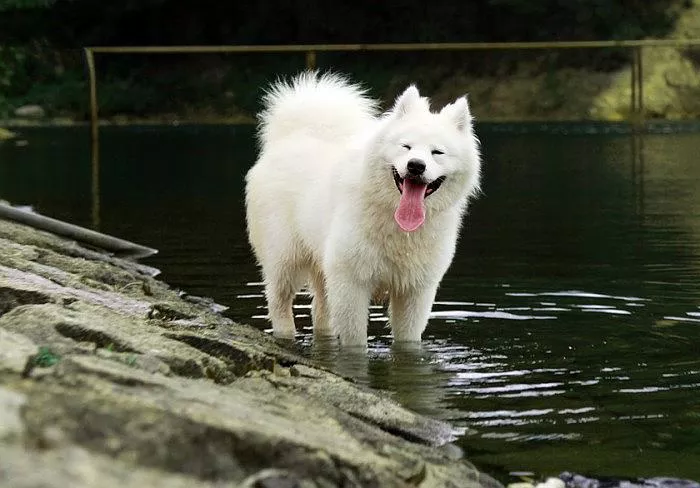Samoyeds are a beloved breed, celebrated for their friendly nature, fluffy coats, and endearing smiles. However, when considering adding a Samoyed to your family, one crucial question often arises: are Samoyeds okay to be left alone? Understanding a Samoyed’s ability to handle solitude is essential for providing them with a happy, healthy life. This article will explore this topic from a professional perspective, taking into account the breed’s characteristics, needs, and potential challenges.
The Social Nature of Samoyeds
Samoyeds are highly social animals. Historically, they were an integral part of the Samoyede people’s lives in Siberia. They worked together with humans, herding reindeer, pulling sleds, and providing companionship. This long – standing partnership has instilled in them a strong need for social interaction.
As a result, Samoyeds thrive on the company of their human families. They enjoy being part of daily activities, whether it’s sitting beside you while you watch TV, following you around the house, or going on walks. Their affectionate and friendly nature means they form deep bonds with their owners, and separation from these loved ones can be difficult for them.
Separation Anxiety in Samoyeds
Due to their social nature, Samoyeds are prone to separation anxiety. When left alone for extended periods, they may experience stress, anxiety, and even panic. Signs of separation anxiety in Samoyeds can include excessive barking, howling, destructive behavior such as chewing on furniture or digging, and inappropriate elimination.
These behaviors are not a sign of disobedience but rather a manifestation of their distress. The dog is trying to cope with the overwhelming feeling of being alone. In extreme cases, separation anxiety can lead to self – harm, such as excessive licking or scratching, which can cause skin problems.
How Long Can Samoyeds Be Left Alone?
In general, adult Samoyeds should not be left alone for more than 4 – 6 hours at a time. Puppies, on the other hand, have even shorter tolerance levels. Puppies under 6 months may only be able to handle being alone for 1 – 2 hours, as they need more frequent attention for potty breaks, feeding, and socialization.
However, these are just general guidelines. Some Samoyeds may be more resilient and able to handle slightly longer periods of solitude, while others may struggle even with shorter absences. It depends on the individual dog’s personality, past experiences, and the level of training and socialization they have received.
Factors Affecting a Samoyed’s Ability to Be Alone
Age
As mentioned, age plays a significant role. Puppies are more dependent and need constant care, attention, and social interaction. They are still learning about the world and need guidance. As Samoyeds grow older, they may become more independent, but their social needs remain high. Senior Samoyeds may also have different requirements. They may be more prone to health issues, and being alone for long periods could cause them additional stress.
Training and Socialization
Proper training and socialization from a young age can significantly improve a Samoyed’s ability to be left alone. Dogs that are well – trained in basic commands like “sit,” “stay,” and “quiet” are more likely to be calm when left alone. Socialization with other people, animals, and different environments can also help a Samoyed become more confident and less anxious when separated from their owner.
Exercise and Mental Stimulation
Samoyeds are an active breed. They need regular exercise to stay physically and mentally healthy. A tired Samoyed is often a more content Samoyed. If a Samoyed has had plenty of exercise, such as a long walk, a play session in the yard, or a run in a safe area, they are more likely to rest quietly when left alone.
Mental stimulation is equally important. Puzzle toys, treat – dispensing toys, or training sessions can keep a Samoyed’s mind engaged. When their minds are occupied, they are less likely to focus on the fact that their owner is away.
Strategies to Help Samoyeds Cope with Being Alone
Gradual Separation
If you need to leave your Samoyed alone, start with short absences and gradually increase the duration. For example, begin by leaving the house for just 5 – 10 minutes, then gradually work your way up to longer periods. This helps the dog get used to the idea of being alone in a more manageable way.
Creating a Comfortable Space
Set up a special area for your Samoyed when you’re away. This could be a crate, a small room, or a corner of the living room. Fill it with their favorite toys, a comfortable bed, and a piece of clothing with your scent. This familiar space can provide a sense of security.
Using Distractions
Related topics


